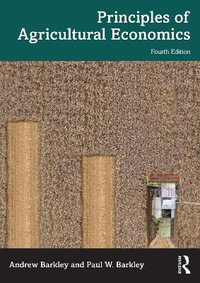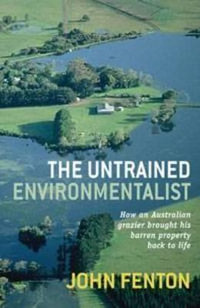| Preface | p. v |
| Introduction | p. xiii |
| Some Data on Rainstorm Run-Off Pollution | p. 1 |
| Sources of Pollution From Rainstorm Run-Off | p. 1 |
| Atmospheric Pollution and Rain | p. 1 |
| Pollution Carried by Rain-Water Overland Flow | p. 2 |
| Global Pollution Carried by Rain | p. 3 |
| Rainstorm Run-Off Pollution in the Network | p. 3 |
| Suspended Matter, Deposited Matter and Resuspension of Matter | p. 3 |
| Variation in Water Contamination and Pollution During a Storm Episode | p. 6 |
| Wastes from Rain-Water Overflow | p. 11 |
| Impact of Run-Off Wastes on the Natural Environment | p. 16 |
| Immediate Effects | p. 18 |
| Delayed or Long-Term Effects | p. 19 |
| Example of Impact of Run-Off Wastes in A Parisian Region | p. 20 |
| Various Types of Weirs and Their Accessories | p. 21 |
| Storm Weirs and Bypasses (Separation of Exchange Works) | p. 21 |
| Components of Storm Weir and Bypass | p. 21 |
| Different Types of Weirs | p. 22 |
| Works with overflow weir | p. 22 |
| Other discharge works | p. 27 |
| Works with vortex | p. 32 |
| Additional Or 'Complementary' Works of Weirs | p. 32 |
| Screens (and Meshwork) | p. 32 |
| Settling and Degritting Chamber | p. 35 |
| Water Rise in Case of Flood or High Tide | p. 36 |
| Basins Associated with Weirs | p. 38 |
| Some Concluding Remarks on Weirs and Bypasses | p. 40 |
| Weirs | p. 40 |
| Bypasses | p. 41 |
| Computation and Measurement of the Characteristics of Weirs | p. 43 |
| Computation of Weirs | p. 43 |
| Choice of Type of Weir | p. 43 |
| Computation of Overflow | p. 44 |
| Calibration (or Adjustment) of Weirs (with Liquid Flow) | p. 49 |
| Measurements | p. 50 |
| Available Material | p. 52 |
| Measurement of Contaminants | p. 54 |
| Facilities for Measurement Programme | p. 54 |
| Continuous Measurement of Flow | p. 56 |
| Principles | p. 56 |
| Example of calibration | p. 57 |
| Available facilities | p. 58 |
| Problems Associated with Use of this Equipment | p. 60 |
| Data Needed for Management | p. 60 |
| Basic Data | p. 60 |
| Complementary Data Needed for Studying Improvement of Discharge | p. 62 |
| Equipment for Dynamic Management | p. 63 |
| Evaluation and Improvement of Hydraulic Efficiency and Separation of Contaminants | p. 67 |
| Efficiency of Weirs and Their Measurement | p. 67 |
| Hydraulic Efficiency | p. 67 |
| Efficiency of Separation of Contaminants in Flow | p. 69 |
| Measurement of Efficiency | p. 71 |
| Hydraulic efficiency | p. 71 |
| Efficiency of separation of contaminants | p. 71 |
| Possible Improvements of Weirs | p. 75 |
| Effect of Storage Upstream | p. 77 |
| Reduction in Load of Contaminants Discharged and Storm Basins | p. 81 |
| Basin design | p. 81 |
| Computation of storage capacity and decantation | p. 82 |
| Efficiency of basins | p. 87 |
| Placement, Calibration and Choice of Weir and its Improvements | p. 91 |
| Placement and Calibration of Weirs | p. 91 |
| Topography | p. 92 |
| Consideration of Urban Development and Priorities | p. 93 |
| Selection of Improvements in Weirs and Their Environment | p. 95 |
| Some Costs Data | p. 96 |
| Alternative solutions | p. 96 |
| Storage-lamination basins | p. 97 |
| Cost of weirs | p. 98 |
| Storm basins and associated lamellar decanters | p. 100 |
| Devices for measurement and remote control | p. 102 |
| Modelling of Network and Simulations | p. 103 |
| Some Remarks on Choice by Way of Conclusion | p. 107 |
| Regulations Concerning Discharge of Weirs | p. 111 |
| Situation Before Directive of CEE, No. 91 271 of 30 May 1991 | p. 111 |
| The United Kingdom | p. 111 |
| Germany and the Netherlands | p. 112 |
| France | p. 112 |
| New Regulations | p. 113 |
| European Directive of 21 May 1991 Concerning Treatment of Residual Water | p. 113 |
| New Regulatory Provisos in France | p. 114 |
| New British Policy | p. 117 |
| Policy Regarding Objectives of Quality and Rainstorm Discharge | p. 119 |
| Method of Controlled Degradation of Water Quality | p. 121 |
| Computational Methods of Reduction of Dissolved Oxygen | p. 122 |
| Comparison Between Method of Downgrading and Computation of Dissolved Oxygen | p. 122 |
| Models of River Quality | p. 123 |
| Modalities of Application | p. 124 |
| Example of Application in France--Case of Nancy | p. 125 |
| Curative Actions in Natural Environment | p. 127 |
| Reinforcement of natural self-purification | p. 127 |
| Reduction of river flotsam | p. 128 |
| Conclusions and Suggestions for Strategic Action and Enhancement of Knowledge | p. 131 |
| Strategy for Action | p. 131 |
| Inventory of Weirs and Bypasses | p. 131 |
| Imbrication of Weirs in the Network | p. 133 |
| Co-Ordination of Weirs and Treatment Plants | p. 133 |
| Discussion of Weirs and Diagnostic Studies of Networks | p. 137 |
| Two Examples of Overall Strategy--Arras and Seine St. Denis | p. 139 |
| Storm Weirs and Sage | p. 140 |
| Improvement of Knowledge | p. 141 |
| Better Knowledge of Each Network | p. 141 |
| General Study | p. 141 |
| Documents Concerning the Methods of Computation | p. 143 |
| |
| Tables 1 and 2 giving values of the coefficient m in Bazin and Rehbock formulas | p. 145 |
| Tables 3 and 4 showing flow rate in litres/second per unit length (metre) of threshold length as given respectively by the Bazin and Rehbock formulas | p. 146 |
| Computation of decantation conditions in a storm basin | p. 147 |
| German method of dimensioning overflow basins in combined system (ATV 128) | p. 157 |
| Case Studies | p. 165 |
| Introduction | p. 167 |
| Impact on the Seine River of the Discharge from Storm Weirs. Results Obtained by the Group 'Urban Catchment Areas' as part of the PIREN-Seine Programme | p. 171 |
| Introduction | p. 171 |
| Deoxygenation | p. 173 |
| Heavy metals | p. 180 |
| Conclusion | p. 185 |
| Discussion | p. 185 |
| Parisian Storm Weirs | p. 187 |
| Present situation | p. 187 |
| Programme of modernisation of storm weirs | p. 189 |
| Case of Alma site | p. 193 |
| Measurements on the Storm Weirs of Parisian | p. 197 |
| Preamble: Characteristics of Parisian Weirs | p. 197 |
| Approach used in a programme of measurement initiated in 1993 | p. 197 |
| Solutions adopted | p. 200 |
| Problems encountered | p. 201 |
| Integration of development of weirs | p. 204 |
| Conclusions | p. 205 |
| Measurement of Water Quality in a Sewarage Network | p. 207 |
| Introduction | p. 207 |
| The ADES Instrument | p. 208 |
| Initial calibration and intercalibration | p. 215 |
| Management of ADES station | p. 232 |
| ADES and management of the basin of Vitry-sur-Seine | p. 237 |
| Conclusion | p. 240 |
| Discussion | p. 240 |
| Summary of Surveys of Weirs | p. 243 |
| Weirs and bypasses | p. 243 |
| Tanks associated with weirs | p. 250 |
| Zones of collection of major weirs | p. 251 |
| Management of works | p. 255 |
| Management of Networks and Storm Weirs of the Parisian Agglomeration | p. 259 |
| Introduction to zone studied | p. 259 |
| Introduction to hydraulic simulations | p. 262 |
| Consideration of qualitative parameters | p. 262 |
| Conclusion | p. 267 |
| Discussion | p. 268 |
| Management of Interdepartmental Works of the Parisian Agglomeration | p. 269 |
| Introduction | p. 269 |
| The SCORE system | p. 271 |
| Suppression of overflow at Clichy | p. 274 |
| Overall management of sewerage | p. 278 |
| Conclusion | p. 281 |
| Discussion | p. 281 |
| Treatment Plant of Acheres: a New Directive Plan on the 2001 Horizon | p. 285 |
| Introduction | p. 285 |
| Present situation | p. 285 |
| Problems of the dry season | p. 288 |
| Problems of the rainy season | p. 292 |
| New Directive Plan for the Acheres Works | p. 292 |
| Conclusion | p. 297 |
| Strategy for Overall Management of Sewerage in Seine Saint Denis | p. 299 |
| Preamble | p. 299 |
| Complexity of network configuration: Example of the Vieille Mer-Moree catchment area | p. 299 |
| Permanent upkeep of the destination of effluents | p. 302 |
| Strategy for management of quality of discharge | p. 305 |
| Discussion | p. 308 |
| General Summary and Conclusions | p. 311 |
| References | p. 317 |
| General Works and Documents | p. 317 |
| Regulations | p. 318 |
| Recent Articles and Books | p. 318 |
| Index | p. 327 |
| Colour Plates | p. 144 |
| Table of Contents provided by Syndetics. All Rights Reserved. |
























